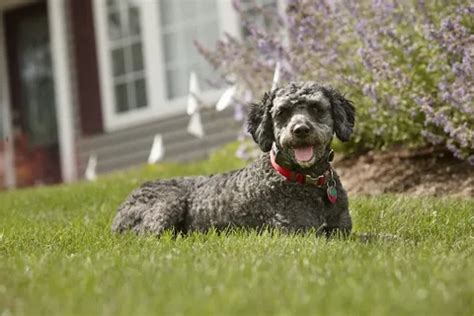Introduction
Small dogs can be bundles of energy and joy, bringing laughter and companionship to our lives. However, their curious and playful nature can sometimes lead them into harm’s way, especially when they wander off. An underground fence can provide a safe and secure solution to keep your furry friend contained within your property.

Benefits of Underground Fences for Small Dogs
- Enhanced Safety: Underground fences prevent dogs from escaping or running into dangerous situations, such as busy streets or encounters with wildlife.
- Increased Freedom: Dogs can roam freely within the defined boundaries without being confined to a leash or yard.
- Trainability: Underground fences provide a consistent and reliable way to train dogs to stay within specific areas.
- Peace of Mind: Owners can relax knowing that their dogs are safe and secure within their property, even when they are not home.
Choosing the Right Underground Fence for Your Dog
The market offers a wide range of underground fences, each designed with specific features and capabilities. When selecting one for your small dog, consider the following factors:
- Size and Weight: Choose a fence with a range and wire length appropriate for your dog’s size and weight.
- Training Method: Underground fences employ different training methods, such as radio signals or buried wires. Determine the best approach for your dog’s personality and training style.
- Boundary Flexibility: Some fences allow for customizable boundaries, enabling you to adjust the size and shape to accommodate your property’s layout.
Installation and Training
Installing an underground fence can be a DIY project or handled by a professional. Here’s a step-by-step guide for DIY installation:
- Mark the Boundaries: Determine the perimeter you want your dog to stay within and mark it with flags or spray paint.
- Bury the Wire: Dig a shallow trench around the perimeter and bury the invisible fence wire according to manufacturer’s instructions.
- Connect the Transmitter: Install the transmitter unit inside your home and connect it to the wire.
- Collar Setup: Fit your dog with the transmitter collar and adjust the correction settings to suit their temperament.
- Training: Start by gradually exposing your dog to the fence and training them to understand the boundaries.
Maintenance and Troubleshooting
Maintaining an underground fence involves regular upkeep to ensure optimal performance:
- Wire Integrity: Inspect the buried wire periodically for any damage or breakage.
- Battery Replacement: Transmitter collars require regular battery changes. Replace them promptly to maintain the system’s effectiveness.
- Boundary Adjustments: Modify the boundary size or shape as needed to accommodate changes in your property or your dog’s behavior.
Cost and ROI
The cost of an underground fence for small dogs can vary depending on the type of fence, property size, and installation method. On average, expect to pay between $500 and $2,500.
The return on investment (ROI) for an underground fence extends beyond financial savings. It provides peace of mind, enhances your dog’s safety, and increases their freedom within your property.
Table: Underground Fence Training Methods
| Training Method | Description | Benefits | Drawbacks |
|---|---|---|---|
| Radio Signal | Transmits a radio signal through buried wires that triggers a correction when your dog crosses the boundary | No physical barrier, flexible boundaries | May not be reliable for dogs with thick fur |
| Buried Wire | Creates a low-voltage field that alarms your dog when they approach the boundary | Physical barrier, consistent training | Requires digging and can be damaged by landscaping |
| Hybrid | Combines radio signal and buried wire for a more robust solution | Flexibility, reliability | May be more expensive than other methods |
Table: Underground Fence Boundary Customization
| Feature | Description | Benefits | Drawbacks |
|---|---|---|---|
| Adjustable Boundary | Allows you to tweak the size and shape of the boundary area | Flexibility, accommodates property changes | May require additional training |
| Multi-Zone Boundary | Creates multiple boundary areas with different correction settings | Allows for more targeted training, e.g., separate zones for play and rest | More complex installation and setup |
| Exclusion Zones | Excludes specific areas within the boundary, e.g., a flower bed or pool | Protects sensitive areas from your dog’s digging or playing | Requires precise wire placement |
Table: Considerations for Small Dogs
| Factor | Consideration | Importance |
|---|---|---|
| Size and Weight | Small dogs may require a fence with lower correction settings and shorter boundary range | Prevents discomfort or excessive stimulation |
| Training Difficulty | Small dogs can be more challenging to train than larger breeds | Patience and a consistent approach are crucial |
| Health and Temperament | Consider your dog’s overall health and temperament before installing a fence | Certain medical conditions or behavioral issues may require professional guidance |
Table: DIY vs. Professional Installation
| Method | Pros | Cons |
|---|---|---|
| DIY Installation | Cost-effective, flexibility in scheduling | Requires technical knowledge, potential for errors |
| Professional Installation | Guaranteed quality, peace of mind | Higher cost, less flexibility |
Advanced Applications of Underground Fences
Beyond traditional containment, underground fences can be repurposed for innovative applications:
- Pet Monitoring: By installing remote transmitters throughout your property, you can track your dog’s location and establish invisible “zones” that trigger alerts when they enter or leave specific areas.
- No-Go Zones: Create virtual barriers around areas you want your dog to avoid, such as a neighbor’s yard or a busy street.
- Indoors: Wireless underground fences can be used indoors to prevent your dog from accessing certain rooms or furniture.
Conclusion
Underground fences offer a safe and effective solution for containing small dogs within your property. They provide peace of mind, enhance freedom, and make training a breeze. By choosing the right fence, installing it properly, and maintaining it regularly, you can ensure a secure and enjoyable environment for your furry companion.
